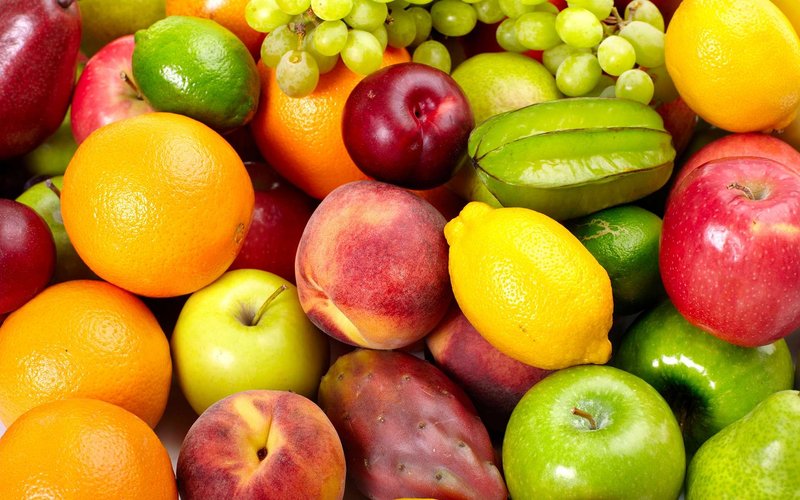
Imagine a creature that flits through the trees, its wings outstretched like a living umbrella, gliding silently in the twilight. This is the fruit bat, a fascinating member of the bat family known for its fruit-based diet and impressive size. These remarkable animals are not just larger than your typical bat; they possess unique traits that set them apart within the mammal kingdom. When you picture a bat, you might think of the tiny, insect-eating varieties that hang in your attic. But fruit bats, or flying foxes as they are often called, are more akin to furry little superheroes of the night sky.
Hailing primarily from tropical and subtropical regions, fruit bats play a crucial role in their ecosystems. They serve as vital pollinators and seed dispersers, helping to maintain the balance of their habitats. You might be wondering what differentiates them from their insect-eating cousins. Well, it’s primarily their diet, size, and social behavior. Instead of consuming bugs, they feast on a rich variety of fruits, nectar, and flowers, showcasing their ecological importance while adding a splash of beauty to the skies.
Physical Characteristics
Fruit bats are known for their impressive wingspans, which can reach up to six feet in some species. To put that into perspective, that’s about the length of a small dog! Their bodies are robust and covered in soft fur, usually in shades of brown, black, or even gray. Unlike smaller bats that have delicate, elongated snouts, fruit bats sport broader faces and more pronounced noses—an adaptation that helps them better navigate the world of fruits and flowers. Their large eyes are designed for low-light conditions, making them skilled at flying through the densest forests at dusk.
These bats also have an extraordinary sense of smell, which aids them in locating ripe fruits from significant distances. It’s almost as if they have a built-in GPS for fruit! They tend to lack the echolocation abilities of other bats, relying more on their keen vision and olfactory senses. This makes observing them while they hunt in the wild a thrilling experience, as they swoop gracefully toward trees laden with delicious fruits. The interplay of light on their wings as they fly between branches can be mesmerizing.
Habitat and Distribution
Fruit bats inhabit various ecosystems, including tropical rainforests, mangroves, and even savannas. You can find them primarily in regions such as Southeast Asia, Australia, parts of Africa, and the Pacific Islands. Their preference for lush environments is no accident—they thrive where there’s an abundance of flowers and fruits. This habitat provides them with both food and shelter, allowing them to roost in large colonies high up in the trees, where they can sleep safely during the day.
Each species of fruit bat has its own specific habitat preferences. For example, the little red flying fox prefers forested areas, while the black flying fox can often be spotted in urban settings, where they adapt to feeding on cultivated fruits. You might see them during the day, clinging to branches in large groups, resembling a cluster of leaves swaying in the breeze. As evening falls, they become active, emerging from their roosts to begin their foraging adventures.
Diet and Feeding Behavior
The diet of a fruit bat is as diverse as the fruits they consume. Primarily, they feast on ripe fruits such as bananas, mangoes, and figs, but they also indulge in nectar and flowers, which provides them with essential vitamins and minerals. You could think of them as the gardeners of the forest; as they eat fruits, they help in seed dispersal, ensuring a new generation of plants can grow. This symbiotic relationship is not just healthy for the bats—it’s vital for maintaining forest ecosystems.
Fruit bats use their long tongues to reach the sweet nectar inside flowers, sometimes resulting in a messy, fruit-filled face. It’s quite a sight! They often have favorite trees or plants that they visit regularly, establishing a sort of fruit buffet that they return to time and again. During feeding, you might witness a flock swooping and diving, displaying a fascinating aerial ballet as they navigate through branches. This behavior not only shows their remarkable flying skills, but it also highlights their importance in the ecosystem.
Reproduction and Lifespan
When it comes to reproduction, fruit bats are quite impressive. These animals often mate once a year, and after a gestation period that can last between 4 to 6 months, females typically give birth to a single pup. The pups are born with their eyes closed and depend heavily on their mothers for survival. It’s heartwarming to see how nurturing these bats can be—as the mother cradles her young while they cling to her belly, teaching them the ropes as they grow. You could say they’re flying family units!
In terms of lifespan, fruit bats can live surprisingly long for their size, often reaching up to 15 years in the wild. Some may even live longer in captivity, where they’re protected from predators and have access to a steady food supply. However, their lifespan can be significantly affected by habitat destruction and hunting, which pose serious threats to their populations. It’s a reminder of how interconnected we are with these creatures and how critical it is to protect their environments.
Conservation Status
Like many species, fruit bats face challenges that threaten their survival. Deforestation for agriculture, urban expansion, and hunting are significant risks that have led to declining populations. Some species are classified as endangered or vulnerable, making conservation efforts crucial. You might be surprised to learn that fruit bats are often misunderstood—people sometimes associate them with disease due to their flying habits and proximity to humans. In reality, they are more likely to benefit human agriculture than cause harm!
Protective measures are being implemented in many regions to safeguard their habitats. Wildlife reserves and conservation programs work to educate communities about the ecological role that fruit bats play. By planting fruit trees and creating green corridors, we can help ensure these amazing creatures continue to thrive in their natural environments. It’s a small but vital step towards preserving biodiversity on our planet!
Interesting Facts About Fruit Bats
| Size: | Wingspan can reach up to 6 feet (1.8 m) |
| Weight: | Can weigh between 1 to 3 pounds (0.5 to 1.4 kg) |
| Diet: | Fruits, nectar, and flowers |
| Habitat: | Tropical rainforests, savannas, and urban areas |
| Lifespan: | 15 years in the wild, longer in captivity |
| Social Behavior: | Live in colonies ranging from dozens to thousands |
Myths and Misunderstandings
Unfortunately, many myths swirl around fruit bats, often leading to fear and misconceptions. One common idea is that all bats carry diseases, such as rabies. While it’s true that fruit bats, like all wild animals, can carry diseases, the vast majority do not pose any risk to humans. In fact, fruit bats tend to be quite gentle and shy creatures! They generally avoid human interaction, preferring to stick to their preferred habitats.
Another misconception is that fruit bats are pests, similar to how some people view regular bats. However, their role as pollinators and seed dispersers showcases their importance in maintaining healthy ecosystems. By promoting fruit growth and spreading seeds, they help forests regenerate and flourish. So next time you hear about fruit bats, think of them more as nature’s little helpers rather than nuisances!
FAQ
Are fruit bats dangerous to humans?
No, fruit bats are generally not dangerous to humans. Despite some misconceptions, they are harmless and often avoid human interaction. They primarily feed on fruits and do not exhibit aggressive behavior towards people.
How do fruit bats navigate at night?
Unlike many other bat species that use echolocation, fruit bats primarily rely on their keen vision and sense of smell to navigate their environments. They can efficiently locate ripe fruits in low-light conditions thanks to their large eyes.
What is the largest species of fruit bat?
The largest species of fruit bat is the Malayan flying fox, which can have a wingspan of up to six feet. This impressive size makes it one of the largest bats in the world, showcasing the unique diversity within the fruit bat family.
Do fruit bats have any predators?
Yes, fruit bats do have predators. Birds of prey, snakes, and some mammals are known to hunt them, especially when they are roosting. Habitat destruction also poses a significant threat to their survival, as it reduces the shelter available to them.
How can I help protect fruit bats?
You can help protect fruit bats by supporting conservation efforts in your area. This can include planting native fruit trees, educating others about the importance of bats, and advocating for wildlife protection laws to maintain their habitats.
Are fruit bats social animals?
Yes, fruit bats are highly social creatures that often roost in large colonies. These colonies can consist of dozens to thousands of individuals, and they engage in social behavior such as grooming and playing, strengthening their social bonds.
What is the primary threat to fruit bats?
The primary threat to fruit bats is habitat loss due to deforestation and urbanization. Additionally, hunting for bushmeat and the spread of diseases pose significant risks to their populations. Conservation efforts are essential to address these threats and protect their habitats.
How do fruit bats contribute to the ecosystem?
Fruit bats play a crucial role in their ecosystems as pollinators and seed dispersers. By consuming fruits and nectar, they help plants reproduce and spread their seeds, contributing to forest regeneration and biodiversity.
Do fruit bats migrate?
Some species of fruit bats do migrate, especially those that live in areas with seasonal food availability. They may travel short distances to find more abundant food sources, following the flowering and fruiting cycles of plants.
Can fruit bats see in the dark?
Yes, fruit bats have excellent night vision, which allows them to navigate their surroundings in low-light conditions. Their large eyes are adapted to help them see well at dusk and dawn, making them effective foragers.
What do fruit bats sound like?
Fruit bats communicate through a variety of sounds, including clicks, grunts, and screeches. These vocalizations can help maintain social bonds within their colonies and coordinate activities, especially during foraging or while roosting.
How long do fruit bats typically live?
In the wild, fruit bats can live up to 15 years, but some may live longer in captivity where they are protected from natural threats. Their lifespan can be affected by environmental factors, such as habitat destruction and availability of food.

